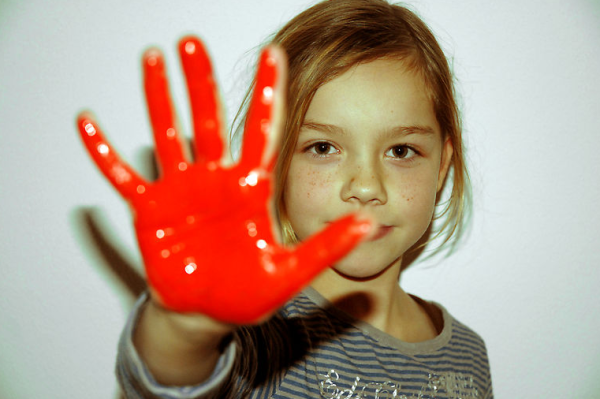

In 2008 children and teenagers initiated a campaign to collect as many red hand-prints as possible to present to the United Nations on Red Hand Day. Since 2002, nations and regional coalitions from around the world have been holding events on 12 February. In the context of this convention, the term "child" applies to all persons under the age of 18 years. In addition to these legal norms, The Worst Forms of Child Labour Convention of the International Labour Organization, adopted in 1999, includes forced or compulsory recruitment of children for use in armed conflict as one of the worst forms of child labour. The "Optional Protocol to the Convention on the Rights of the Child on the Involvement of Children in Armed Conflict", adopted in 2000, stipulates that its State Parties shall take all feasible measures to ensure that persons below the age of 18 do not take a direct part in hostilities, and that they are not compulsorily recruited into their armed forces.

For persons older than 15 but younger than 18 years, the State Parties to the Geneva Conventions shall endeavour to give priority to those who are oldest. According to the Additional Protocols I and II to the Geneva Conventions, adopted in 1977, children who have not attained the age of 15 years shall neither be recruited in the armed forces or groups, nor allowed to take part in hostilities. These include International human rights law and International humanitarian law. The military use of children is addressed by a number of international legal norms. Children are also easy to influence and be made to follow a specific cause. They lack the ability to correctly identify dangers and to assess the risks of specific situations.
#Redhand daym full
Up to a certain age, children don't have a full grasp of the finality of death and the severity of the act of killing a human being. The most important reason that armed groups or even some governments recruit children as soldiers is their diminished capability to distinguish between right and wrong, as well as between reality and an adventurous game. The worldwide number of child soldiers is estimated to be 250,000 (as of 2009, roughly unchanged since 2006), a third of whom are girls, in at least 17 countries-including some who have ratified the treaty however it is difficult to know the correct number, as most of them are deployed in armed rebel groups. The work of these organizations can be summarized by the abbreviation DDR: Disarmament, Demobilization, Reintegration. These organizations include, for example, the United Nations Child Fund (UNICEF), Amnesty International, Terre des Hommes or the International Red Cross and Red Crescent Movement. A number of international organizations are active against the use of children as soldiers. This protocol was adopted by the General Assembly of the United Nations in May 2000 and currently has signatures from over 100 different states. Red Hand Day was initiated in 2002 when the Optional Protocol to the Convention on the Rights of the Child on the Involvement of Children in Armed Conflict entered into force on February 12, 2002. Rehabilitation for child-soldiers returned to their communities ranges from inadequate to non-existent. Estimates on the number of children engaging in armed conflict around the world show no change between 20. Children have been used repeatedly as soldiers in recent years including armed conflicts in the Democratic Republic of the Congo, Rwanda, Uganda, Sudan, Côte d'Ivoire, Myanmar, Philippines, Colombia, and Palestine. The aim of Red Hand Day is to call for action against this practice, and support for children who are affected by it. Red Hand Day, February 12 each year, is an annual commemoration day on which pleas are made to political leaders and events are staged around the world to draw attention to the fates of child soldiers, children who are forced to serve as soldiers in wars and armed conflicts.


 0 kommentar(er)
0 kommentar(er)
